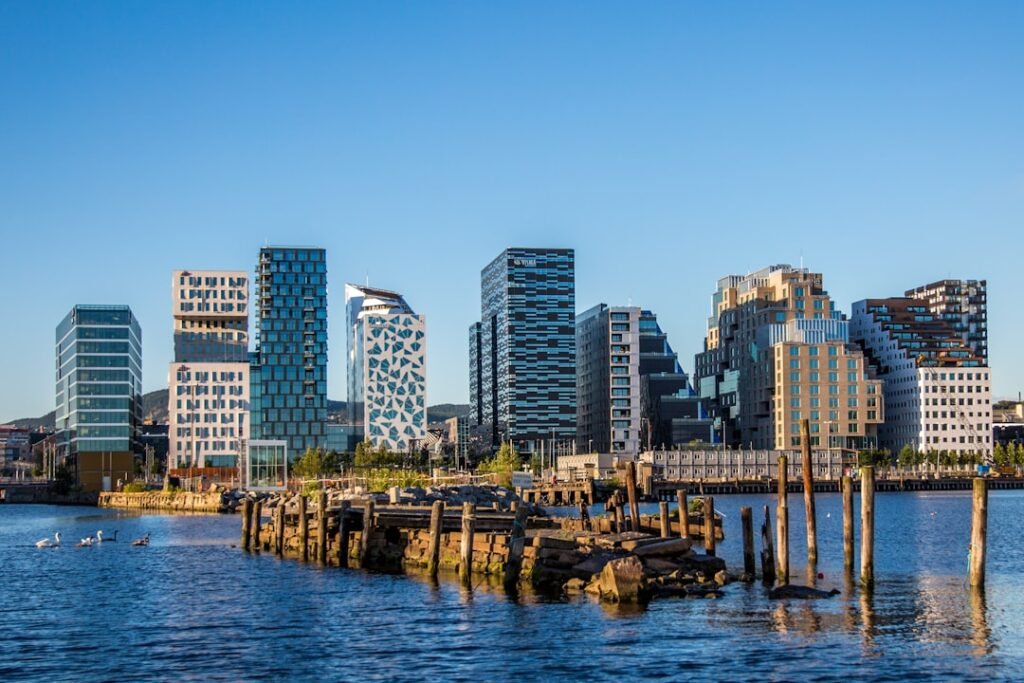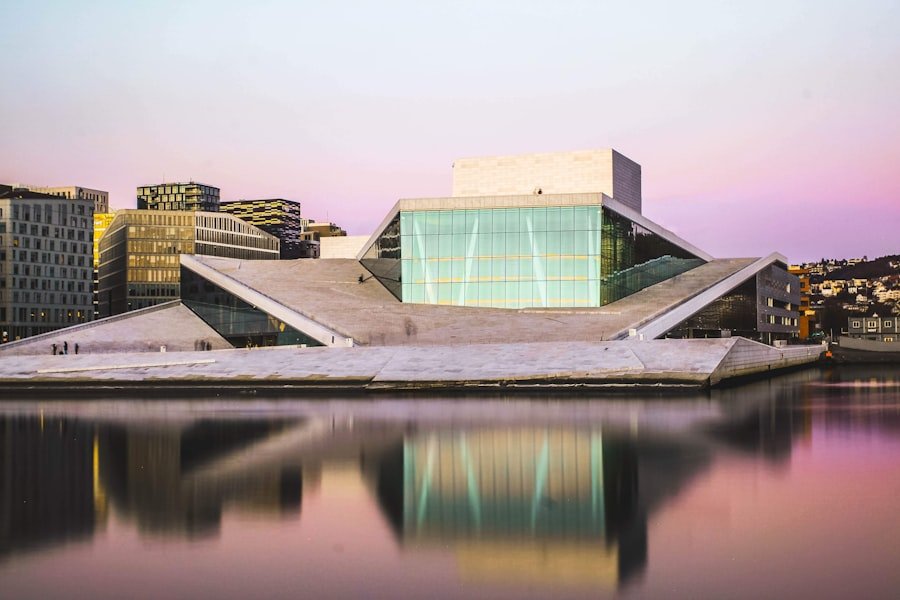

Social Media and Digital Communication in Norwegian
In recent years, Norway has witnessed a remarkable surge in the use of social media, transforming the way individuals interact and communicate. Platforms such as Facebook, Instagram, Twitter, and Snapchat have become integral to the daily lives of many Norwegians, facilitating connections that transcend geographical boundaries. This digital revolution has not only altered personal communication but has also reshaped societal norms and cultural practices.
The rise of social media has provided a platform for self-expression, allowing users to share their thoughts, experiences, and creativity with a broader audience. The increasing prevalence of social media in Norway can be attributed to several factors. Firstly, the high level of internet penetration and smartphone usage in the country has made it easier for people to access these platforms.
According to recent statistics, over 90% of Norwegians are active internet users, with a significant portion engaging with social media daily. Furthermore, the appeal of social media lies in its ability to foster community and connection, particularly among younger generations who are more inclined to seek validation and interaction online. As a result, social media has become a vital aspect of Norwegian society, influencing everything from personal relationships to public discourse. Boost Productivity and Integration. Explore the benefits of NLS company courses for your business.
Table of Contents
ToggleSummary
- Social media has become an integral part of Norwegian society, impacting communication, politics, business, culture, and education.
- Digital communication has transformed traditional Norwegian communication, leading to changes in language, media, and journalism.
- Social media plays a significant role in Norwegian politics and activism, influencing public opinion and mobilising citizens.
- Norwegian businesses utilise social media for advertising and customer engagement, shaping consumer behaviour and market trends.
- The influence of social media on Norwegian culture is evident in emerging trends and the adoption of global influences, presenting both opportunities and challenges.
The Impact of Digital Communication on Traditional Norwegian Communication
The advent of digital communication has had profound implications for traditional forms of communication in Norway. Face-to-face interactions, once the cornerstone of social engagement, have been increasingly supplanted by online conversations. While this shift has facilitated greater connectivity, it has also raised concerns about the erosion of interpersonal skills and the depth of relationships.
Many individuals now find themselves communicating through screens rather than engaging in meaningful dialogue, leading to a potential decline in the quality of social interactions. Moreover, traditional communication methods such as letters and phone calls have seen a significant decline in usage. The immediacy and convenience of digital communication have rendered these older forms less appealing.
However, this transition is not without its drawbacks; the nuances of tone and body language often get lost in text-based communication, leading to misunderstandings and misinterpretations. As Norwegians navigate this new landscape, there is an ongoing debate about the balance between embracing digital communication and preserving the richness of traditional interactions.
The Role of Social Media in Norwegian Politics and Activism

Social media has emerged as a powerful tool for political engagement and activism in Norway. Politicians and political parties have recognised the potential of these platforms to reach a wider audience and mobilise support for their causes. Campaigns are increasingly conducted online, with candidates using social media to share their messages, engage with constituents, and respond to current events in real-time.
This shift has democratized political discourse, allowing ordinary citizens to participate in discussions that were once dominated by traditional media outlets. Activism has also found a new home on social media platforms, where movements can gain traction quickly and effectively. Issues such as climate change, gender equality, and indigenous rights have been amplified through hashtags and viral campaigns, galvanising public support and prompting action.
The ability to share information rapidly has empowered activists to organise protests, raise awareness, and hold authorities accountable. However, this newfound power comes with challenges; misinformation can spread just as quickly as legitimate information, complicating efforts to foster informed public discourse.
Social Media and Norwegian Business: Advertising and Customer Engagement
In the realm of business, social media has revolutionised advertising strategies and customer engagement practices in Norway. Companies are increasingly leveraging these platforms to connect with consumers on a more personal level. Social media allows businesses to showcase their products and services creatively while fostering a sense of community among their customers.
Brands that effectively utilise social media can build loyalty and trust by engaging directly with their audience, responding to inquiries, and addressing concerns promptly. Furthermore, the rise of influencer marketing has transformed the advertising landscape in Norway. Influencers—individuals with substantial followings on social media—have become key players in promoting products and services.
Their authentic endorsements resonate with consumers who value peer recommendations over traditional advertising methods. This shift has prompted businesses to rethink their marketing strategies, focusing on building relationships rather than merely pushing sales. As a result, social media has become an essential component of business operations in Norway, driving innovation and customer-centric approaches.
Digital Communication and the Norwegian Language
The proliferation of digital communication has also had a significant impact on the Norwegian language itself. As social media platforms encourage brevity and informality, language usage is evolving rapidly. Abbreviations, slang, and emojis have become commonplace in online interactions, reflecting a shift towards more casual forms of expression.
While this evolution can enhance creativity and playfulness in communication, it also raises concerns about the preservation of linguistic integrity. Moreover, the influence of English on Norwegian digital communication cannot be overlooked. Many young Norwegians are increasingly incorporating English phrases and expressions into their everyday language, particularly on social media.
This trend reflects broader globalisation patterns but also poses challenges for maintaining the richness of the Norwegian language. Language purists worry that the influx of English could dilute cultural identity and heritage. As digital communication continues to shape language use in Norway, it is essential to strike a balance between embracing innovation and preserving linguistic traditions.
Social Media and Norwegian Culture: Trends and Influences

Social media has become a significant driver of cultural trends in Norway, shaping everything from fashion to entertainment preferences. Platforms like Instagram and TikTok allow users to share their lifestyles, interests, and creative pursuits with a global audience. This interconnectedness fosters a sense of community among individuals who share similar passions while also exposing them to diverse cultural influences from around the world.
The impact of social media on Norwegian culture is particularly evident in the realm of music and art. Artists can now promote their work directly to fans without relying solely on traditional gatekeepers such as record labels or galleries. This democratization of cultural production has led to an explosion of creativity as emerging artists gain visibility through viral content.
However, it also raises questions about authenticity; as trends come and go at an unprecedented pace, distinguishing genuine artistic expression from mere imitation becomes increasingly challenging.
The Challenges of Digital Communication in Norwegian Society
Despite its many benefits, digital communication presents several challenges for Norwegian society. One significant concern is the rise of cyberbullying and online harassment. The anonymity afforded by social media can embolden individuals to engage in harmful behaviour that they might not exhibit in face-to-face interactions.
This issue is particularly prevalent among young people who may be more vulnerable to negative online experiences. Additionally, the pervasive nature of digital communication can lead to information overload and decreased attention spans. With an abundance of content vying for attention on social media platforms, individuals may struggle to discern credible information from misinformation or sensationalism.
This challenge is compounded by algorithms that curate content based on user preferences, potentially creating echo chambers that reinforce existing beliefs rather than encouraging diverse perspectives. As Norwegians navigate these challenges, fostering digital literacy becomes essential for promoting healthy online engagement.
Social Media and Norwegian Education: Opportunities and Risks
The integration of social media into education presents both opportunities and risks for Norwegian students and educators alike. On one hand, social media can serve as a valuable educational tool that enhances collaboration and communication among students. Platforms like Google Classroom or educational forums allow for seamless sharing of resources and ideas while fostering a sense of community within classrooms.
However, the use of social media in educational settings also raises concerns about distractions and the potential for negative impacts on mental health. Students may find it challenging to focus on their studies when constantly bombarded by notifications from various platforms. Furthermore, issues such as cyberbullying can extend into educational environments, creating hostile atmospheres that hinder learning experiences.
As educators strive to harness the benefits of social media while mitigating its risks, developing comprehensive digital citizenship curricula becomes increasingly important.
The Influence of Social Media on Norwegian Media and Journalism
Social media has fundamentally altered the landscape of journalism in Norway by changing how news is disseminated and consumed. Traditional news outlets now compete with social media platforms for audience attention, leading to shifts in reporting practices and content creation strategies. Journalists are increasingly utilising social media not only as a distribution channel but also as a source for breaking news stories.
However, this shift raises questions about journalistic integrity and the reliability of information shared online. The rapid spread of misinformation poses significant challenges for journalists striving to maintain credibility in an era where sensationalism often trumps accuracy. As audiences become more discerning consumers of news content, media organisations must adapt by prioritising fact-checking processes while embracing innovative storytelling techniques that resonate with digital audiences.
Social Media and Digital Communication in Norwegian Government and Public Services
The role of social media in Norwegian government and public services has grown significantly over recent years as authorities seek to engage citizens more effectively. Government agencies are increasingly using social media platforms to communicate important information about policies, initiatives, and public services directly to citizens. This approach fosters transparency while encouraging civic participation by providing citizens with accessible channels for feedback.
However, challenges remain regarding how best to navigate this new landscape effectively. Ensuring that information shared via social media is accurate and timely requires careful planning and coordination among various government departments. Additionally, there is a risk that certain demographics may be excluded from these digital conversations if they lack access or familiarity with technology.
As Norwegian authorities continue exploring ways to leverage social media for public engagement purposes, addressing these disparities will be crucial for fostering inclusive governance.
The Future of Social Media and Digital Communication in Norwegian Society
Looking ahead, the future of social media and digital communication in Norwegian society is likely to be shaped by ongoing technological advancements alongside evolving cultural norms. As new platforms emerge and existing ones adapt their features based on user preferences, individuals will continue finding innovative ways to connect online while navigating complex societal dynamics. Moreover, discussions surrounding privacy concerns will remain at the forefront as users grapple with balancing personal expression against potential risks associated with data sharing online.
As awareness grows regarding issues such as surveillance capitalism or algorithmic bias within digital spaces—Norwegians may demand greater accountability from tech companies while advocating for policies that protect individual rights. In conclusion, while social media offers numerous opportunities for connection within Norwegian society—it also presents challenges that require thoughtful consideration moving forward. By fostering critical engagement with these platforms—Norwegians can harness their potential while safeguarding against pitfalls associated with digital communication trends shaping contemporary life today.
Unlock Your Team’s Full Potential. Learn how our corporate Norwegian training can help.
If you want to learn Norwegian, you can register for classes here. We look forward to hearing from you and helping you become fluent in Norwegian.





